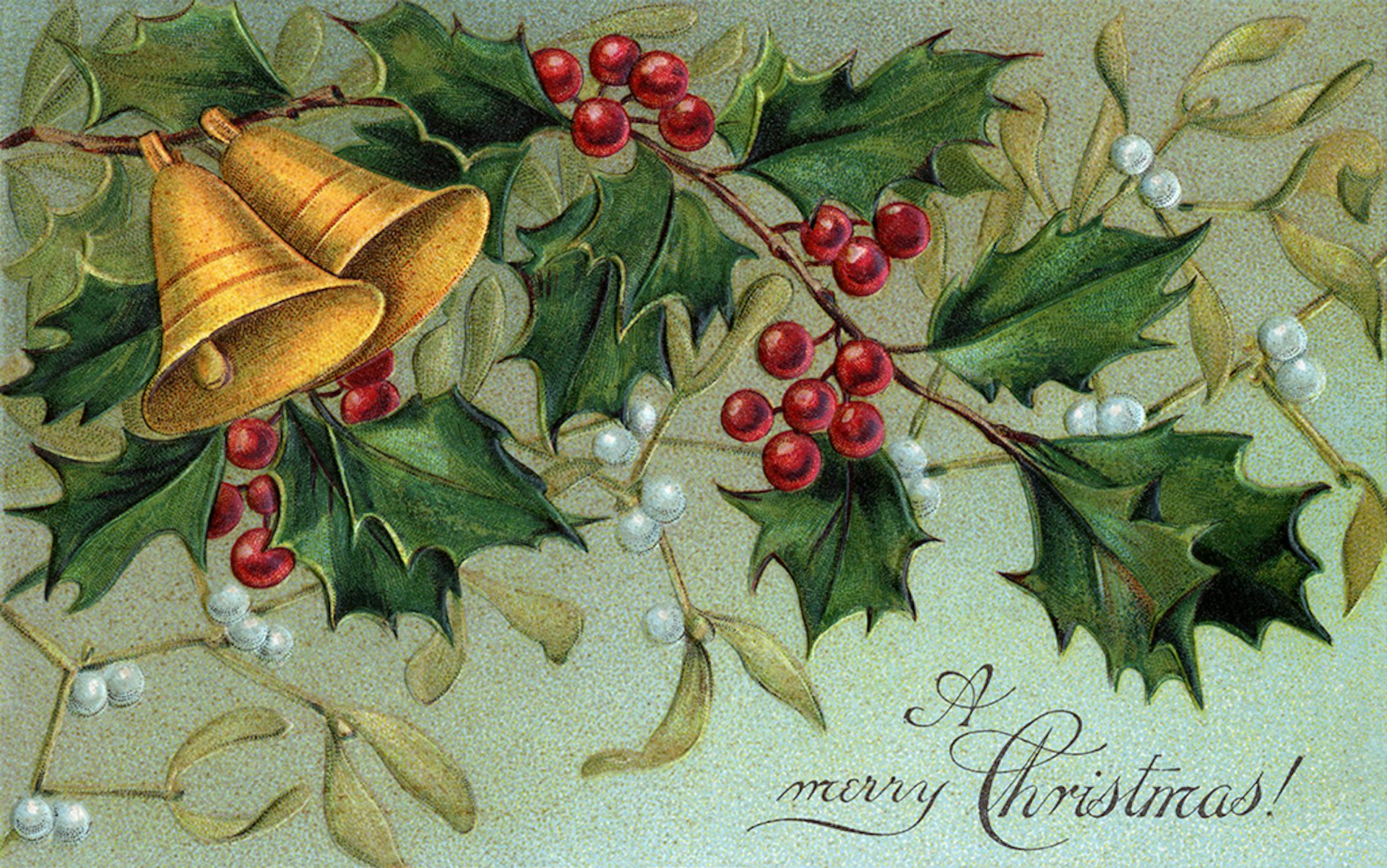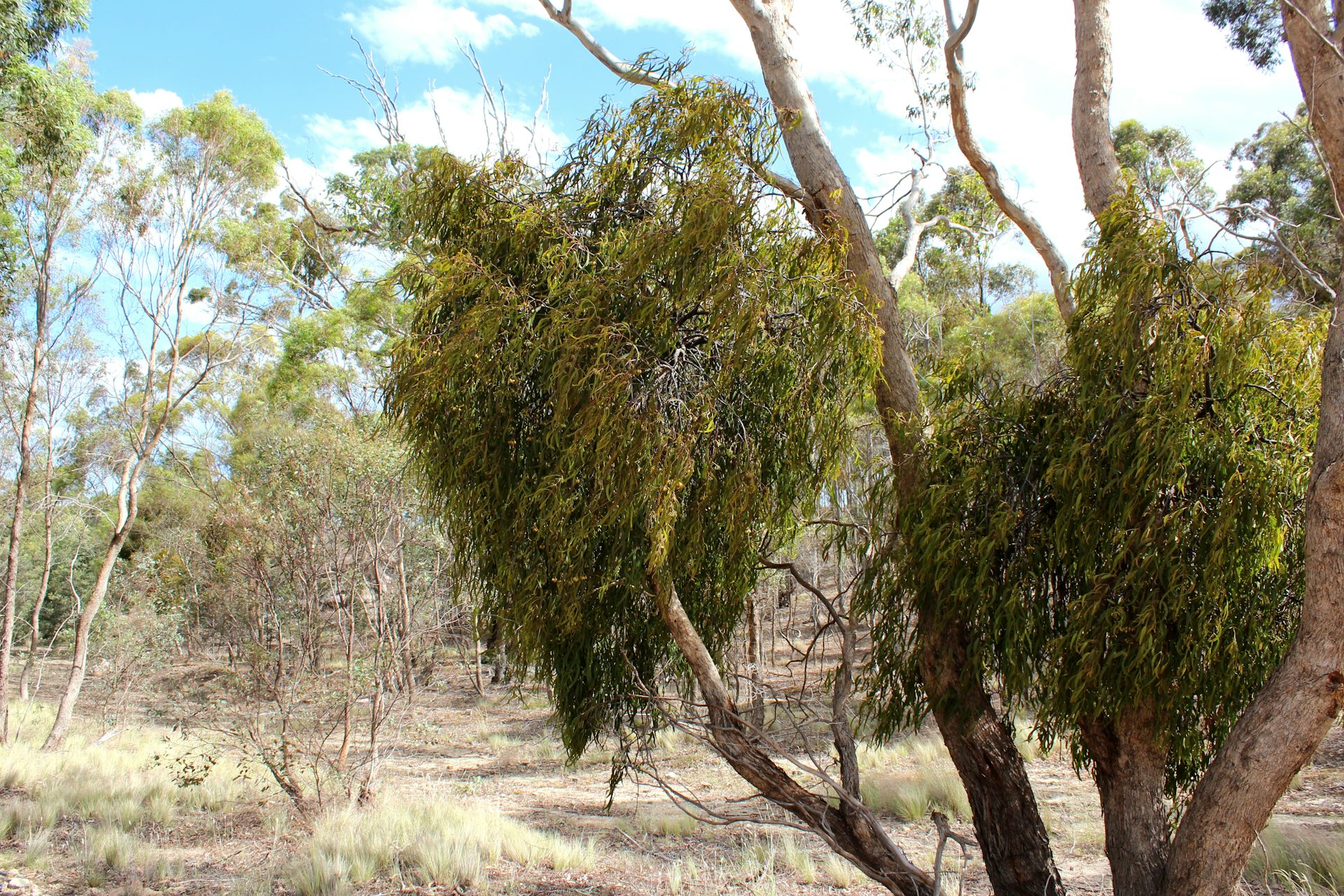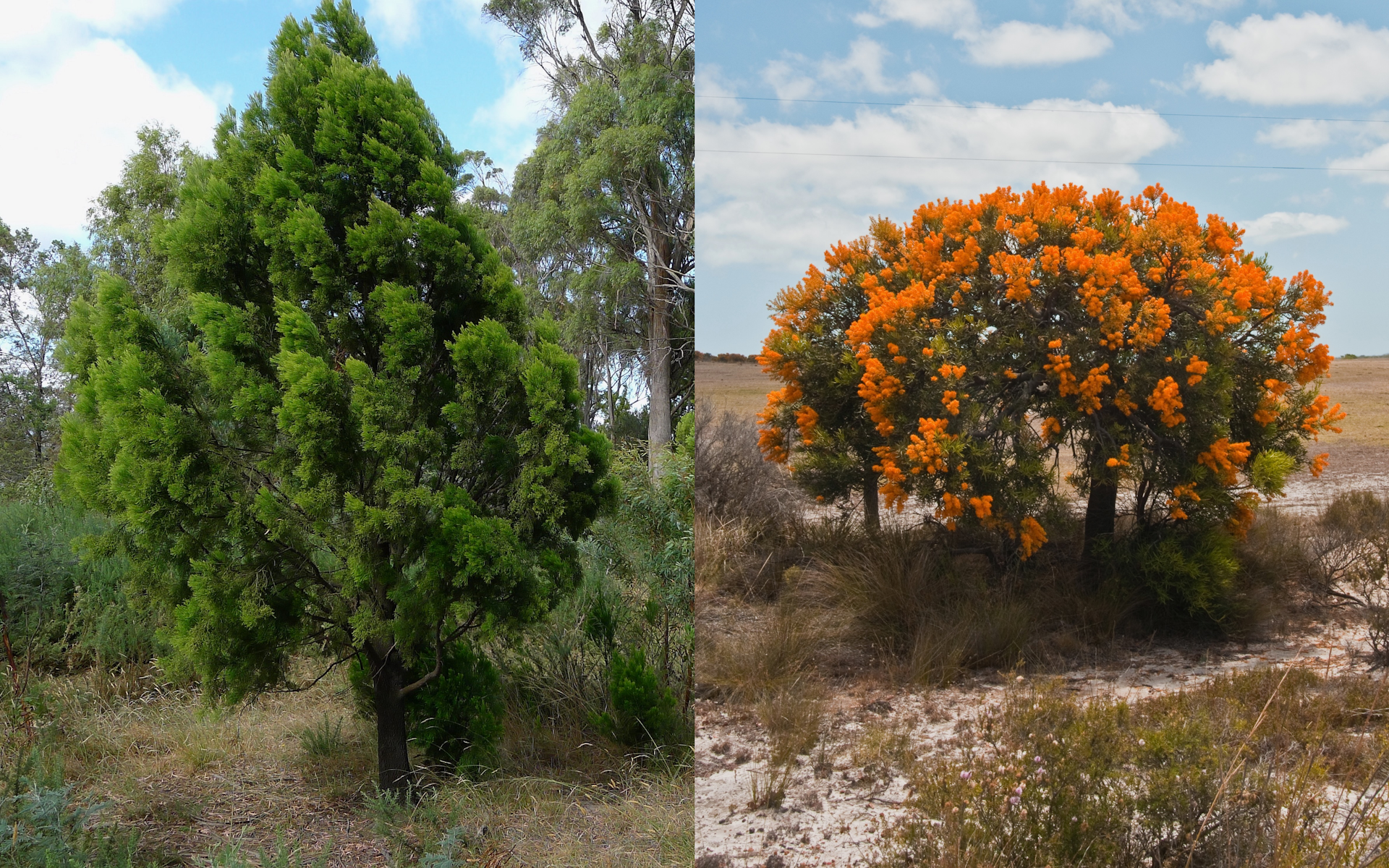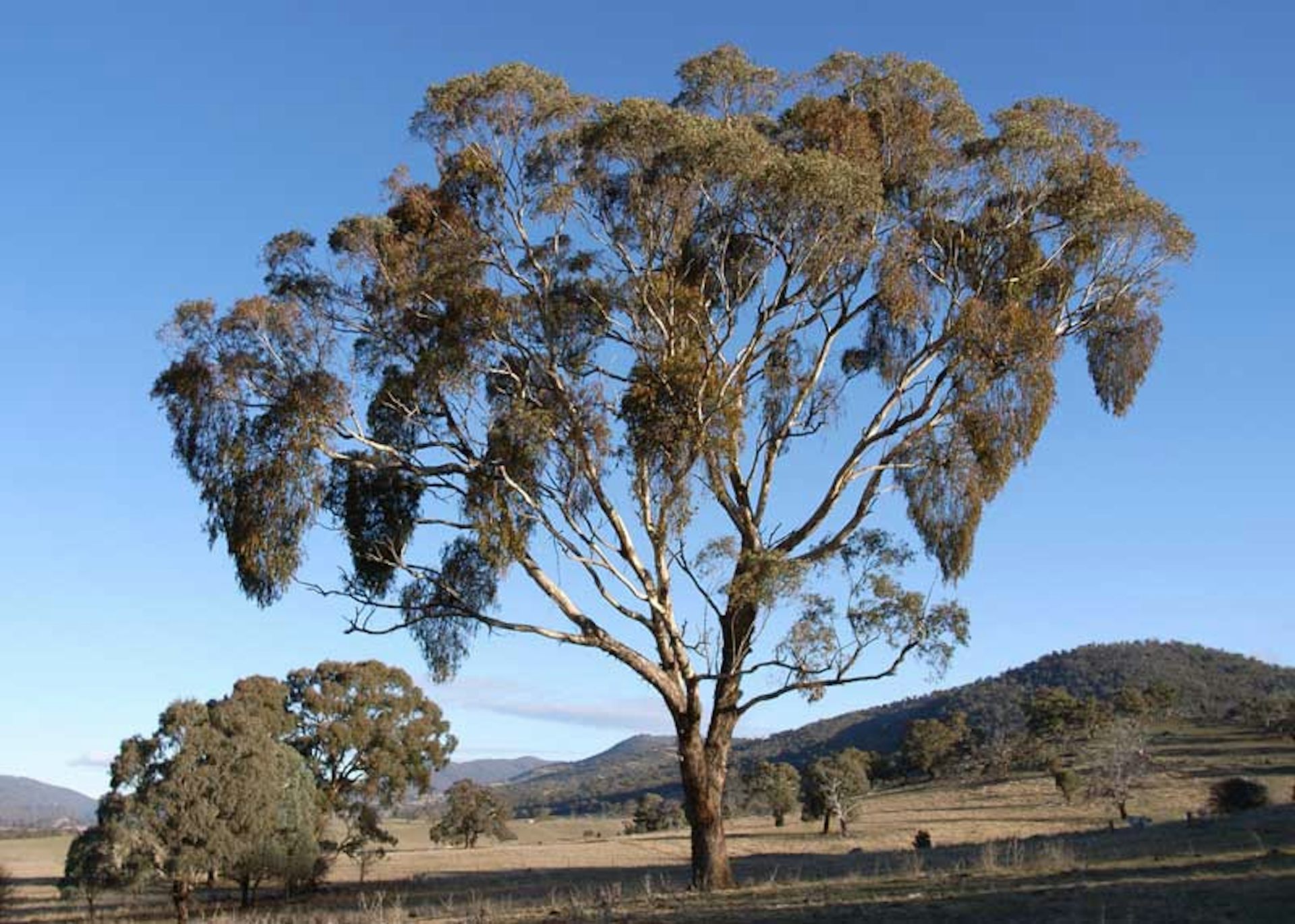At a time of giving and receiving, our many Australian mistletoes do it too
Mistletoe is a hemiparasitic plant and obligate parasite on many different species of tree. It can kill a heavily infested tree. Although mistletoe is photosynthetic, so produces its own sugars, it is dependent on its host for water and the nutrients such as nitrates and other minerals that the host plant obtains from soil. There is no evidence that mistletoe gives anything back to the host in the form of sugars.
Mistletoes and similar parasitic plants obtain the nutrients from their host via a structure called a haustorium which infiltrates the host tissues and forms a close association with the vascular bundles.
But why would an intelligent designer create all the complexity needed for a parasitic lifestyle when it had supposedly designed other plants to obtain nutrients from the soil, and simply added another layer of complexity between the host's roots and the parasitic plant's tissues to achieve the same result? In fact, this is just another example of the needless complexity that characterises evolved systems and distinguishes them from intelligently designed systems, which are characteristically minimally complex.
And it hasn't just done it once! There are over 100 parasitic species of similar plants in Australia alone, which I'll come to next, but first, a little AI background on mistletoe:
Tell me all about mistletoe; its evolution and how it obtains its nutrients. Mistletoe is a fascinating plant with a rich history and cultural significance, often associated with winter holidays and traditions. Here's a brief overview of mistletoe, including its evolution and nutritional strategies:And those 100 or more Australian parasitic plants? I wrote about some of them in my popular, illustrated book, The Malevolent Designer: Why Nature's God is Not Good. Not all of these are mistletoes as we know them - parasitic plants which grow in the branches of trees - some are root parasites, but parasites none the less, and all have the complex haustorium that no intelligent designer in its right mind would imagine is better than the root of the plants on which they are parasites, simply because they depend on those very roots themselves and the haustorium is a structure for stealing what the roots are supplying to both them and their host.
Evolution of Mistletoe:
Life Cycle and Reproduction:
- Plant Classification:
- Mistletoe belongs to the family Viscaceae. There are two main types: the European mistletoe (Viscum album) and the American mistletoe (Phoradendron spp.).
- Parasitic Adaptation:
- Mistletoe is classified as a hemiparasitic plant. While it can photosynthesize and produce its own food, it also relies on other host trees for some nutrients.
- Evolutionary Adaptations:
This adaptation allows mistletoe to draw nutrients directly from the host.
- Mistletoe has evolved specialized structures called haustoria. These are root-like structures that penetrate the host tree's tissues to extract water and nutrients.
Nutritional Strategies:
- Seeds and Spread:
- Mistletoe produces berries containing sticky seeds. Birds, particularly thrushes, eat the berries and excrete the seeds onto tree branches, where they germinate.
- The sticky substance helps the seed adhere to the bark, increasing the likelihood of germination.
- Germination and Attachment:
- Once germinated, mistletoe sends out a specialized structure called a haustorium, which penetrates the host tree's tissues, connecting the mistletoe to the host's vascular system.
- Growth and Development:
- Mistletoe grows as a branching, green plant. It can photosynthesize and produce its food through its green leaves.
Cultural Significance:
- Photosynthesis:
- Mistletoe leaves contain chlorophyll and are capable of photosynthesis, producing sugars and other organic compounds.
- Parasitic Dependency:
- Despite photosynthesis, mistletoe depends on its host for water, mineral nutrients, and some other essential compounds.
- Haustoria facilitate the transfer of water and nutrients from the host to the mistletoe.
In conclusion, mistletoe is a unique plant with both parasitic and photosynthetic capabilities, relying on its host tree for some nutrients while also producing its own through photosynthesis. Its cultural significance adds an extra layer of interest to this intriguing plant.
- Symbolism:
- Mistletoe has been a symbol of fertility, love, and renewal in various cultures.
- It is commonly used in holiday decorations, especially during Christmas, where the tradition of kissing under the mistletoe is popular.
- Medicinal Uses:
- Historically, mistletoe has been used in traditional medicine for various purposes, though its medicinal properties are still a subject of research and debate.
In the following article, reprinted from The Conversation under a Creative Commons licence, and reformatted for stylistic purposes, Gregory Moore Senior Research Associate, School of Ecosystem and Forest Sciences, The University of Melbourne describes Australian Mistletoes:

At a time of giving and receiving, our many Australian mistletoes do it too
Gregory Moore, The University of Melbourne
The airwaves and shopping centres have been filled with Christmas songs and carols. Apparently mommy was seen kissing Santa underneath the mistletoe. Harry Potter’s first kiss was also under a twining white-flowered mistletoe.
Magic, mystery and symbolism surround mistletoes. Their popularity at Christmas comes from their evergreen foliage symbolising life without end.
The festive traditions relate to the English mistletoe, Viscum album, and American mistletoe, Phoradendron leucarpum. These traditions may not apply to our species, but the mystery and magic certainly do.
Australia has nearly 100 species of mistletoes – 75 of them in the plant family Loranthaceae – which are not to be confused with the northern hemisphere species. They occur across the country, except in Tasmania. They are parasitic plants, though for many species their biology is not fully understood.
My interest in mistletoes stems from the many native species that live on common trees such as eucalypts, elms, plane trees, liquidambars, oaks and common fruit trees. Being parasites, mistletoes have often been seen as receivers or even takers, rather than givers, which is hardly in the spirit of the festive season. However, recent research has revealed they are givers too!

Traditional Christmas mistletoes, as shown on this early 20th-century card, are the white-berried American and English species.
Credit: Royce Bair/Flickr, CC BY-NC-ND
Indigenous communities were well aware of the sweet sticky fruits and the medicinal benefits certain mistletoe species provided. They also used mistletoes as a general indicator of the condition of Country and as part of fire management. Some may have used the foliage in their cleansing and welcome ceremonies too.
You may be thinking it’s a mystery why you haven’t noticed these plants more often. That’s explained by a bit of mistletoe magic.
Many of our species have a brilliant camouflage. Their leaves mimic those of the host tree (a phenomenon called crypsis). So mistletoes such as Amyema miguelli and A. pendula have leaves that resemble those of eucalypts, but they become conspicuous when they flower.
Mistletoes are hemi-parasites, which means they have green leaves and photosynthesise like other plants, but take water and nutrients from their hosts. They do this by tapping into the transport system inside the host plant and diverting some of the water and nutrients it contains.

Mistletoe leaves can look a lot like those of their host, such as this box mistletoe (Amyema miquelii) on a yellow box (Eucalyptus melliodora) tree.
Credit: Arthur Chapman/Flickr, CC BY-NC-SA
Mistletoes shed more leaves more often than other plants of comparable size. These leaves contain valuable elements and compounds. This shedding creates a litter layer and compost that enriches the soil and increases the biodiversity not only in the soil but in the environment around them.
It isn’t just other plants that benefit from these gifts. The numbers of different insects, spiders and fungi present in the leaf litter goes up significantly where mistletoes are present. So too does the diversity of birds and other animals.
Many native mistletoes have spectacular and colourful flowers. These are an important source of food for many insect and bird species.
This means mistletoes are important for the biodiversity of the ecosystems that contain them.
There is more mistletoe magic! Mistletoes often have a dense foliage, which creates a cooler microclimate in their vicinity. Mistletoes also continue to transpire water when other plants have ceased due to dry conditions, which further cools the air.
There is evidence that birds and mammals nest in the denser cooler mistletoe foliage in preference to other more abundant plants growing around them. Animals also take refuge within and under mistletoes when it’s very hot. This benefit for native wildlife may be all the greater as climate changes.
Too many mistletoes can harm their host
We tend to notice mistletoes when flowering and bird feeding peak, or when their evergreen foliage stands out against the bare branches of deciduous host trees. We can then be surprised at how many mistletoes are growing in the canopy of a tree in our garden.
In some parts of Australia, the number of mistletoes can increase over time such that large numbers on a single host can sap the tree’s vigour. Branches beyond the point of mistletoe attachment die back, particularly on older trees and in drier seasons. When there are more than 20 mistletoes per tree, both its growth rate and flowering are reduced.
In hot dry conditions, high mistletoe numbers can lead to the deaths of older, stressed trees. Changes to fire regimes and the clearing of native vegetation are likely causes of increased mistletoe infestation.
For your garden trees, some appropriate mistletoe control may benefit not only your trees but the mistletoes too. Mistletoe control requires a sophisticated approach because of their importance for local ecosystems.
A large tree with a full canopy in good condition can cope with about four to six mistletoes. Survey mature trees to ascertain mistletoe numbers and take steps to control some, but not all, of the mistletoes if infestations are excessive.
To remove mistletoe, cut the connection to the host tree as close as possible to the branch or trunk without damaging the host. In some cases there may be more than one connection and so several cuts may be required. Sometimes nature will take control as mistletoes can die from excessive water loss during heatwaves.

Australia has two native mistletoes associated with Christmas: the cherry ballart (Exocarpos cupressiformis) and the Western Australian Christmas tree (Nuytsia floribunda).
Credit: John Tann/Flickr, Grame Churchard/Wikimedia Commons, CC BY
Not all mistletoes grow in tree canopies. Some are root parasites. They include the cherry ballart, Exocarpos cuppressiformis, and the spectacular Western Australian Christmas tree, Nuytsia floribunda.
The latter is renowned for its abundant brilliant yellow-orange flowers over the Christmas period. Early settlers used the cherry ballart with its conifer-like foliage as a Christmas tree with or without its red “cherries” as decoration. The “cherries” are not true fruits, but swollen fruit stalks - another bit of mistletoe magic and mystery.
Gregory Moore, Senior Research Associate, School of Ecosystem and Forest Sciences, The University of Melbourne
This article is republished from The Conversation under a Creative Commons license. Read the original article.
This is why the only excuse for parasites and species like mistletoe with their complicated way to obtain nutrients that creationists can think of is that, in addition to what they claim is the only entity capable of designing living organisms, something else, namely 'sin', is also busy designing living organisms and their 'omnipotent' designer is powerless to prevent it, although it plays its part in the resulting arms races.
No wonder mistletoe, although not banned in Anglican churches, strictly speaking, is traditionally never taken into an Anglican church, ostensibly because it has pagan associations.




No comments:
Post a Comment
Obscene, threatening or obnoxious messages, preaching, abuse and spam will be removed, as will anything by known Internet trolls and stalkers, by known sock-puppet accounts and anything not connected with the post,
A claim made without evidence can be dismissed without evidence. Remember: your opinion is not an established fact unless corroborated.